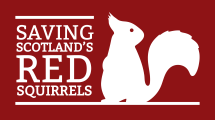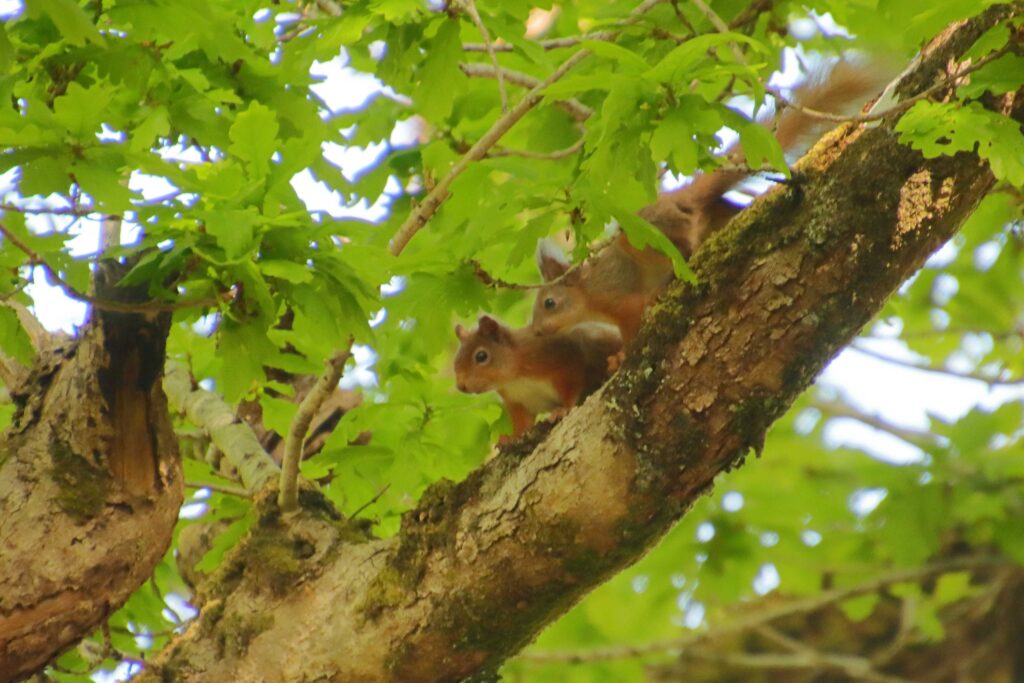Trees for Life is an award-winning environmental charity standing at the forefront of rewilding in the Scottish Highlands. Focusing on Scotland’s spectacular Caledonian forest, they are working on a grand scale to bring more life back to our landscapes. Their work focuses on restoring habitats and expanding native woodlands, returning missing animals, and connecting people with nature.
The red squirrel is known as ‘feòrag ruadh’ in Gaelic, and is also informally referred to as the ‘feòrag Ghàidhealach’ or the ‘Gaelic squirrel.’ The Caledonian forest is the UK stronghold for our native and much-loved red squirrel, which is missing from most of southern Britain. Habitat loss has been one of the main drivers of the decline, along with the introduction of the non-native grey squirrel and the squirrel pox disease they carry.
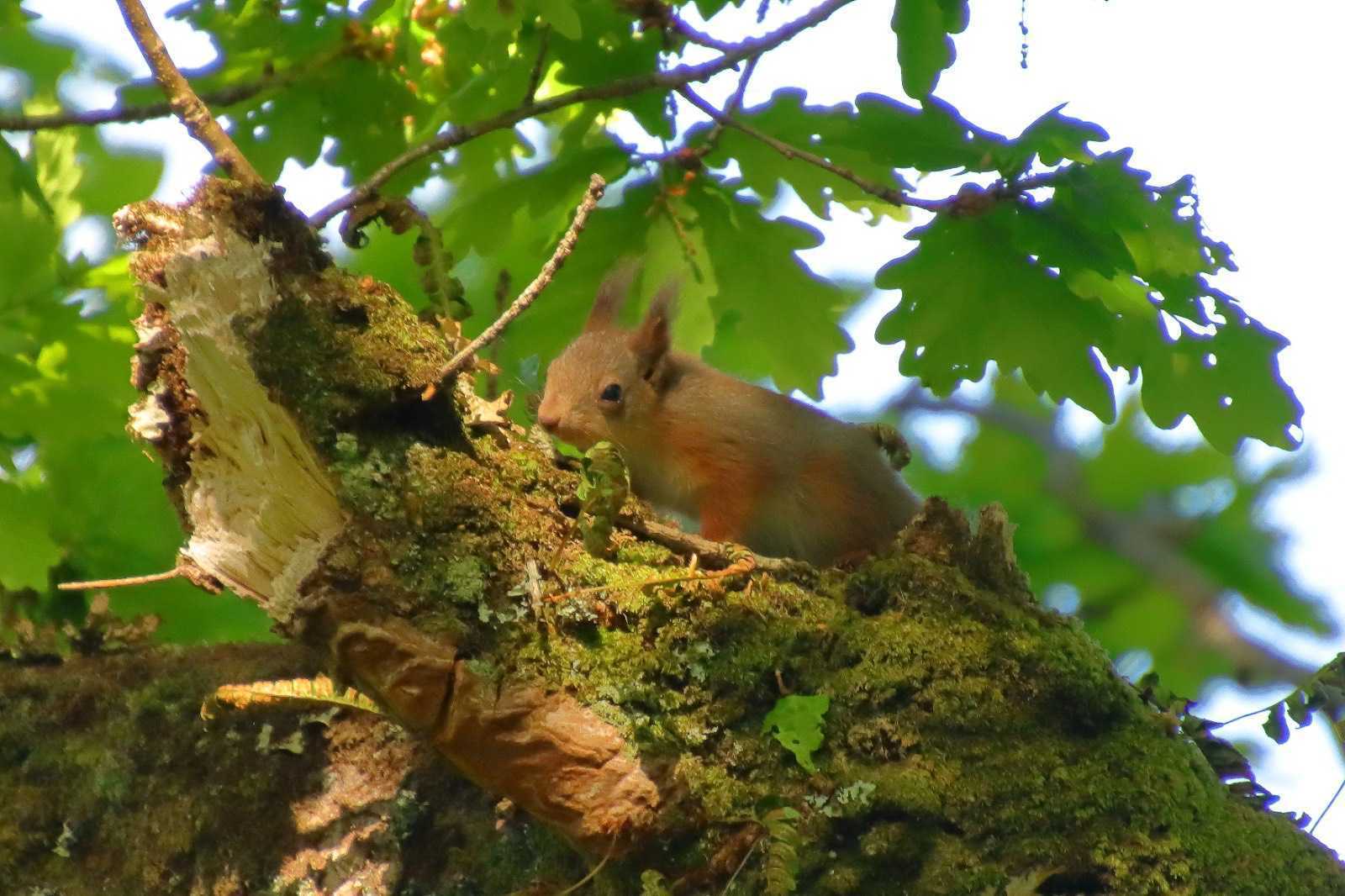
As a forest-dwelling species, expanding existing forest fragments and creating new woodlands is essential for red squirrel conservation. Red squirrels are able to live in both coniferous and deciduous (broadleaved) woodlands due to their wide-ranging diet. Their ideal habitat has a variety of different tree species so that there are other food sources available if one species has a poor seed year.
Tree seeds such as acorns, hazelnuts and Scots pine cones make up a large part of their diet – a squirrel can eat the seeds from as many as 20,000 cones in a year! Reds also make full use of the forest around them, and will feed on things like flowers, lichens, shoots, bulbs, buds, berries, fungi, birds’ eggs and insects.
As squirrels carry nuts or seeds in their mouths, chemicals from scent glands in their cheeks rub onto the food. These subtle scent markers act like a guide, helping the squirrel relocate its hidden stores later.
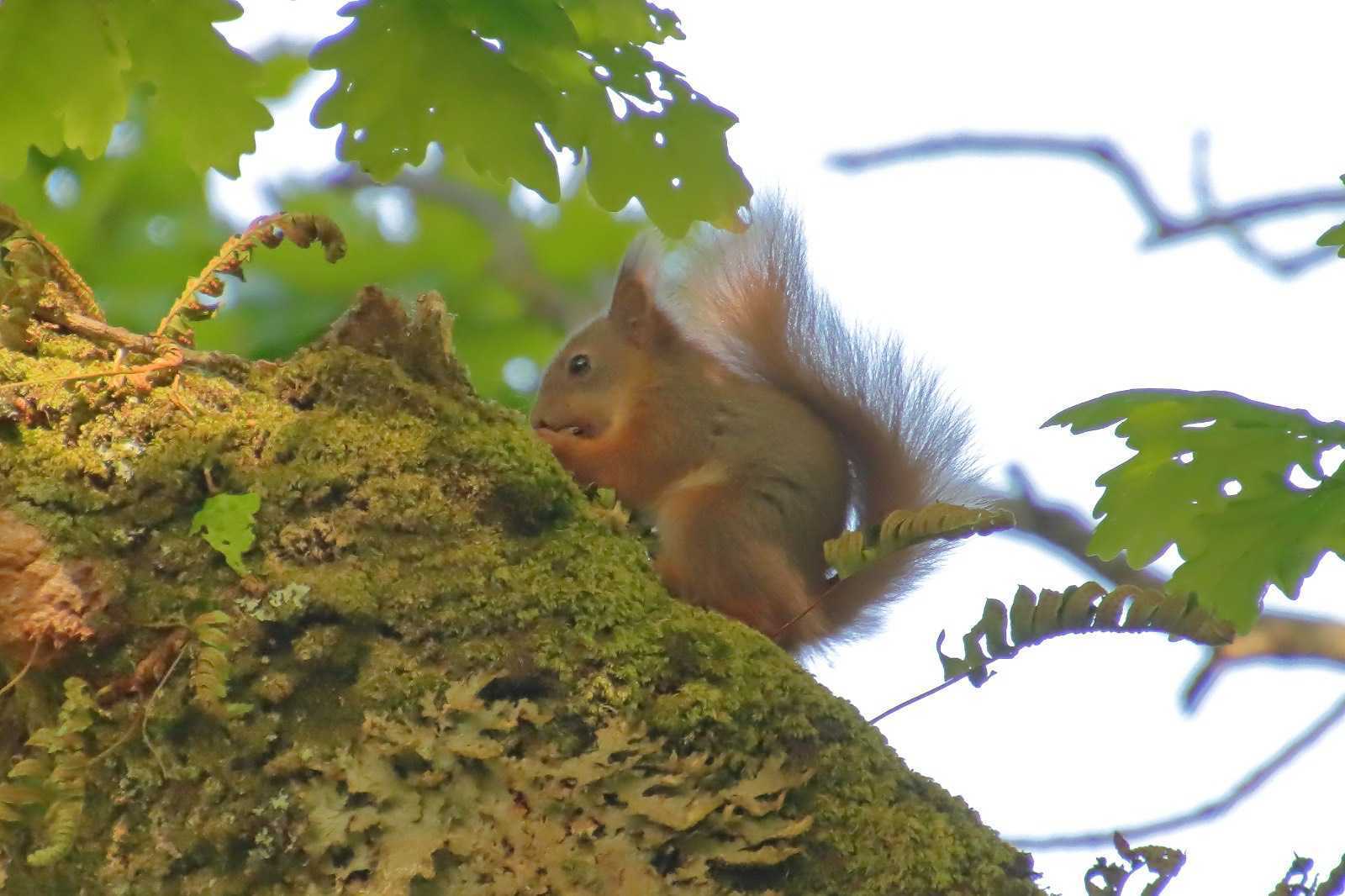
Despite eating a high volume of pine seeds, hazelnuts and acorns, squirrels do not have a negative impact on the tree’s ability to reproduce. In fact, squirrels play a vital role for trees which rely on animals for seed dispersal. Not every seed a squirrel tucks away is recovered which means some are left behind to sprout into new trees – often far from the parent tree.
Before the loss of much of the Caledonian forest, red squirrels in Scotland had a larger range and population. Evidence of their presence even appears in surprising places. In 1994, on the largely treeless West Affric Estate, a pine cone was discovered among the stumps of ancient Scots pines preserved in the peat. Remarkably, the cone had unmistakable marks of having been stripped by a squirrel. Some of these stumps have been dated back around 4,000 years, offering a fascinating glimpse into the long history of Scotland’s woodland dwellers.
Even within Scotland, red squirrels are absent from many of their former territories. There is plenty of suitable forest habitat across the northwest Scottish Highlands but reds struggle to naturally expand due to fragmented woodland and open ground.
Trees for Life’s Red Squirrel Reintroduction Project is playing a vital role to support this iconic species in the Scottish Highlands. Since 2016, Trees for Life has been working to reintroduce red squirrels to parts of the northwest Highlands where they once thrived. So far, they have translocated 259 squirrels, establishing 13 new populations in Shieldaig, Coulin, Plockton, Inverewe, Reraig, Attadale, Letterewe, Lochaline, Spinningdale, Golspie, Arisaig, Drimnin, and Ratagan.
In spring 2025, they were delighted to hear that red squirrels at the Drimnin release site, on the west coast, had kits. The photos in this blog show an adult female with her juvenile. The young squirrel is easy to spot with its distinct tufted ears and slimmer less bushy tail.
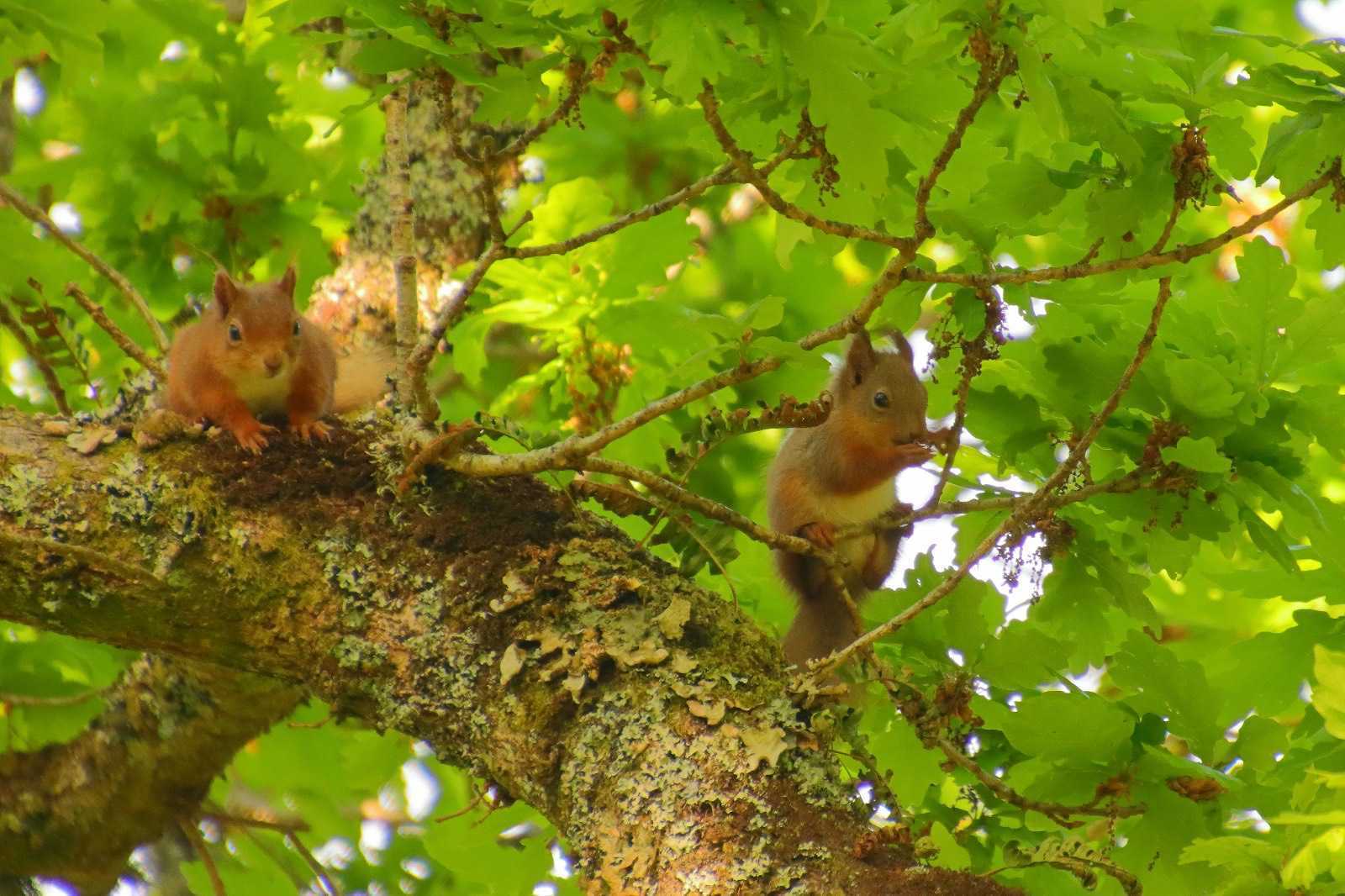
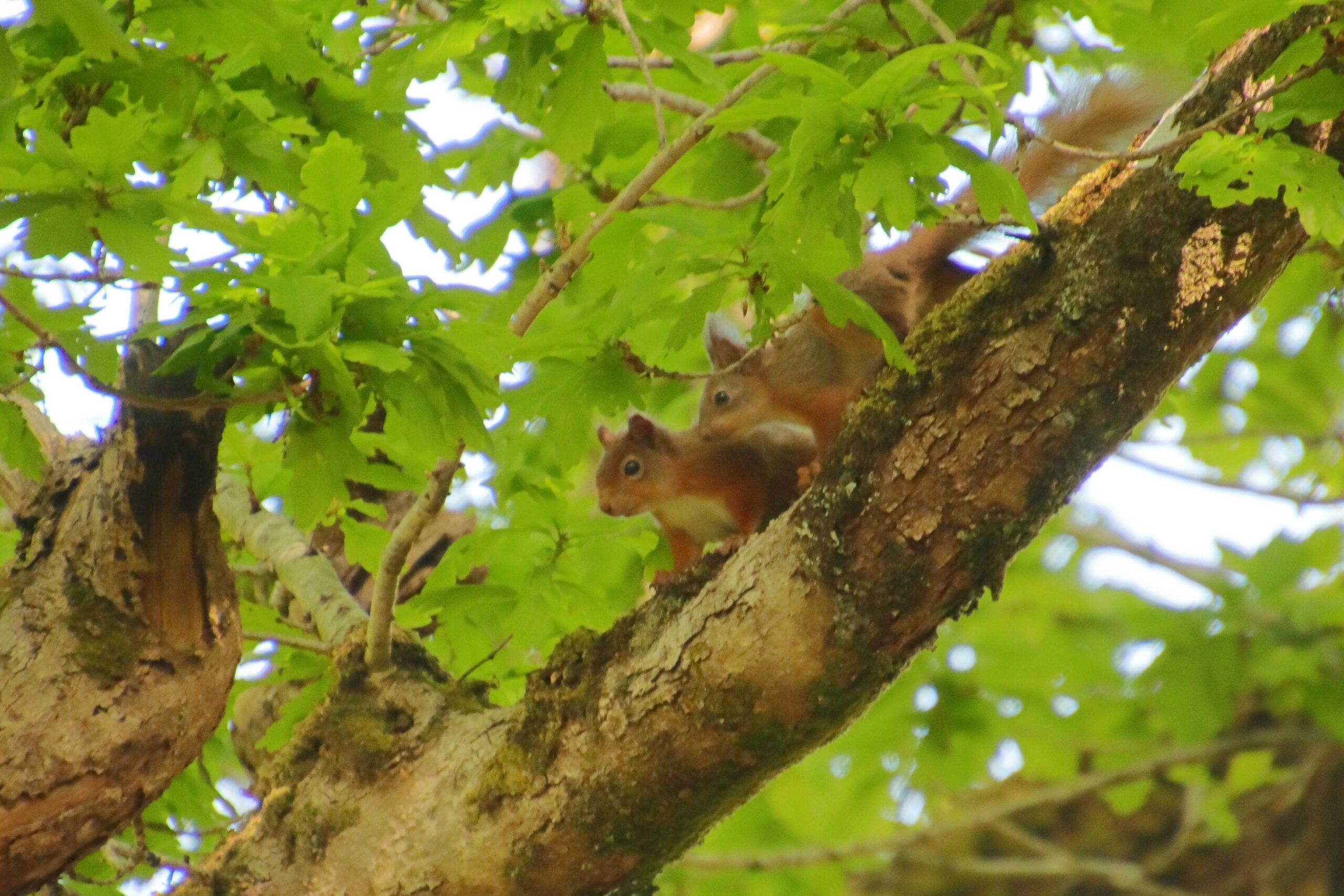
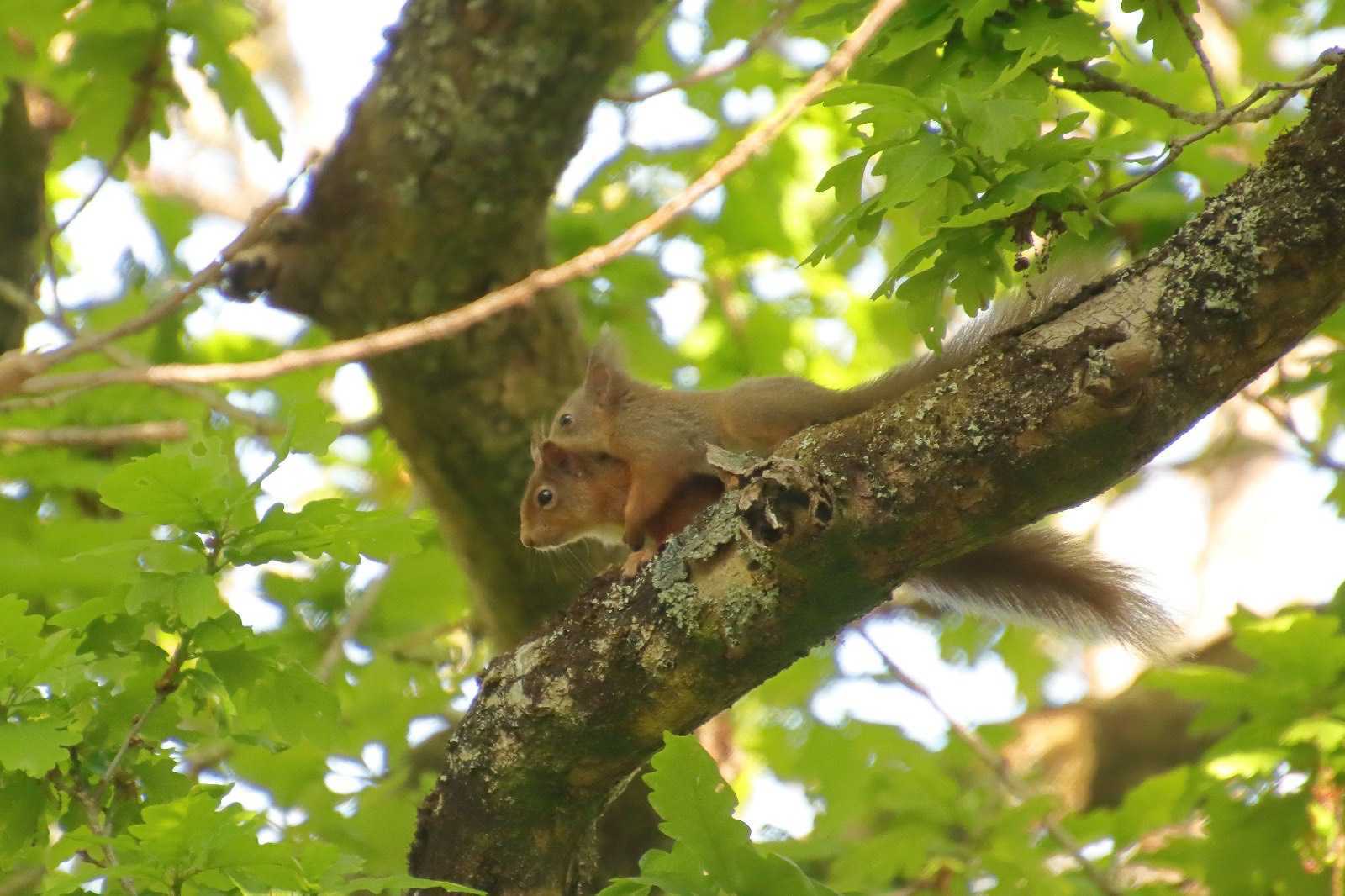
These new populations are thriving. Over time, we expect them to grow and connect – turning this pioneering work into a long-term rewilding success story. You can help us to monitor the success of the project by reporting your squirrel sightings here.
Find out more about Trees for Life’s Red Squirrel Reintroduction Project: https://treesforlife.org.uk/about-us/red-squirrel-reintroduction-project/
Image credits:
Rhonda Newsham
References:
Red squirrel facts, Trees for Life: https://treesforlife.org.uk/into-the-forest/trees-plants-animals/mammals/red-squirrel/
Roddy Maclean 2021 NatureScot report: https://www.nature.scot/doc/naturescot-research-report-1230-ecosystem-services-and-gaelic-scoping-exercise
